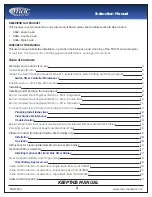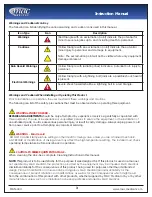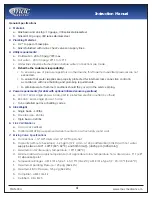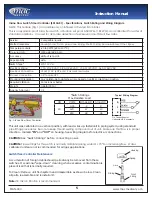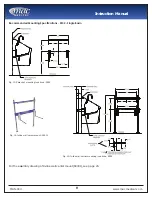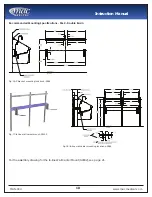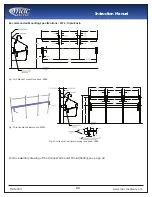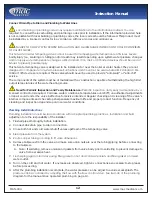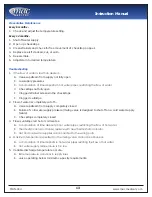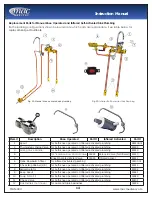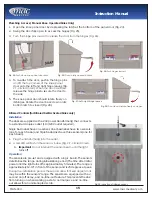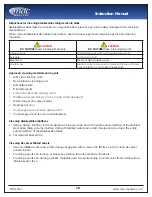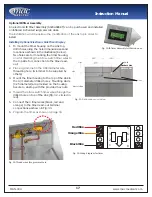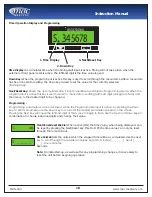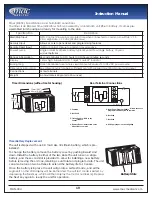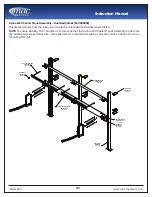
Instruction Manual
MAN-004
16
www.macmedical.com
Instructions for Cleaning Stainless Steel Surgical Scrub Sinks
Stainless steel sinks must be cleaned on a regular basis to prevent any unnecessary damage to the stainless
steel surfaces.
When cleaning Ssainless steel sinks, make sure to use the proper approved cleaning agents and cleaning
materials.
CAUTION
DO NOT USE
these Cleaning Materials
CAUTION
DO NOT USE
these Cleaning Agents
Abrasive Pads
Hard Water (water with a pH reading above 7.0).
Scrapers
Hydrochloric Acid
Steel Wool
Steam or high pressure water
Wire Brushes
Bleach or any compounds containing chlorine or Soldium
hypochlorate, or ammonium chloride salts.
Approved cleaning materials and agents
•
Soft, clean lint-free cloth
•
Non-abrasive cleaning pads
•
Soft bristle brush
•
Mild detergents
• Sodium Bicarbonate (baking soda)
• Distilled water (pH rating 7) alone or with a mild detergent
•
White vinegar (in a spray bottle)
•
Isopropyl Alcohol
• Hospital-grade non-bleach disinfectants
•
Cleaners approved for use on stainless steel
Cleaning Stainless Steel Surfaces
1. Using a damp, lint-free cloth and approved cleaner, wipe down the entire exterior surface of the stainless
steel sinks. Using a damp, lint-free cloth with distilled water and a mild detergent, wipe down the entire
exterior surface of the stainless steel sinks.
2. Let cleaned sinks air dry.
Cleaning Decals or Printed Labels
•
Use only distilled water and a mild detergent applied with a clean, dry lint-free cloth to clean decals or
printed labels.
•
Cleaning agents can remove or smear any printing from decals and print labels.
•
Cleaning agents can damage plastic materials used in manufacturing covers for electronic items such as
infrared sensor face.

